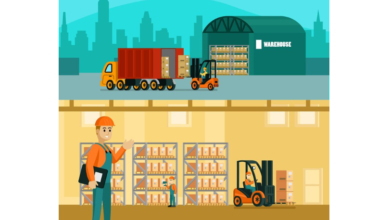Solving Oxford’s Drainage Problems with Advanced Cutting-Edge Techniques

Oxford, a city renowned for its historic architecture and lush green spaces, has long faced significant drainage challenges. Heavy rainfall, ageing infrastructure, and urban expansion have resulted in frequent flooding and waterlogging. However, with advanced cutting-edge techniques, the city can address these persistent problems while maintaining its unique charm. In this article, we explore innovative drainage solutions that promise to revolutionise Oxford’s water management systems.
Understanding Oxford’s Drainage Challenges
1. Historic Infrastructure
Oxford’s drainage systems, many of which date back decades or even centuries, were not designed to handle today’s increased rainfall intensity or the pressures of urbanization. Aging pipes and poorly maintained sewers exacerbate water retention and flooding issues.
2. Urbanization and Climate Change
Rapid urban development has led to a significant increase in impervious surfaces like concrete and asphalt, reducing natural water absorption. Additionally, climate change has brought unpredictable and intense weather patterns, further straining the city’s drainage capacity.
3. Environmental Impact
Frequent flooding not only damages property but also disrupts ecosystems. Pollutants from urban runoff often end up in local water bodies, affecting biodiversity and water quality.
Advanced Drainage Techniques Transforming Oxford
1. Sustainable Urban Drainage Systems (SuDS)
Sustainable Urban Drainage Systems (SuDS) are eco-friendly solutions designed to mimic natural water cycles. These systems include green roofs, permeable pavements, and rain gardens, which absorb and filter rainwater effectively. By integrating SuDS into Oxford’s urban planning, the city can reduce waterlogging while enhancing its aesthetic appeal.2. Smart Drainage Technology
Cutting-edge smart technology is revolutionizing water management. Sensor-enabled drains and IoT (Internet of Things) devices can monitor water levels and detect blockages in real-time. These systems provide authorities with actionable data, enabling proactive maintenance and minimizing flood risks.
3. Underground Storage and Diversion Systems
Modern underground storage tanks and diversion systems offer a practical solution for managing excess stormwater. These structures temporarily store rainwater during heavy downpours, releasing it gradually into the drainage network to prevent overloading.
4. Bioengineering Solutions
Bioengineering techniques, such as constructed wetlands and vegetative swales, provide natural methods for managing drainage. These systems not only improve water absorption but also enhance biodiversity, creating habitats for local wildlife.
Case Studies: Successful Applications of Advanced Techniques
1. The Thames Valley Initiative
In collaboration with local councils, the Thames Valley Initiative implemented SuDS across flood-prone areas near Oxford. The use of green infrastructure significantly reduced water pooling and improved water quality in surrounding rivers.
2. Copenhagen’s Climate Resilient Streets
Oxford can draw inspiration from Copenhagen, which introduced smart drainage systems to combat urban flooding. The integration of permeable surfaces and underground storage has transformed the city into a global model for sustainable drainage.
Benefits of Cutting-Edge Drainage Solutions
1. Flood Mitigation
Advanced drainage techniques reduce the frequency and severity of flooding, protecting homes, businesses, and public infrastructure.
| Neve Miss : | www.politicser.com pepperboy news |
2. Environmental Protection
Eco-friendly solutions like SuDS and bioengineering minimize the environmental impact of urban runoff, promoting cleaner rivers and healthier ecosystems.
3. Cost-Effective Maintenance
Smart drainage systems enable predictive maintenance, reducing the costs associated with emergency repairs and water damage.
4. Aesthetic and Recreational Value
Green infrastructure adds beauty to urban spaces, offering recreational opportunities for residents and improving overall quality of life.
Conclusion
Solving Oxford’s drainage problems requires a blend of innovation, sustainability, and strategic planning. As Oxford leads the way in modern drainage solutions, it sets a benchmark for other cities facing similar issues. The time to act is now—with the right strategies and help from drainage services oxford professionals, the future can remain both resilient and water-secure.




